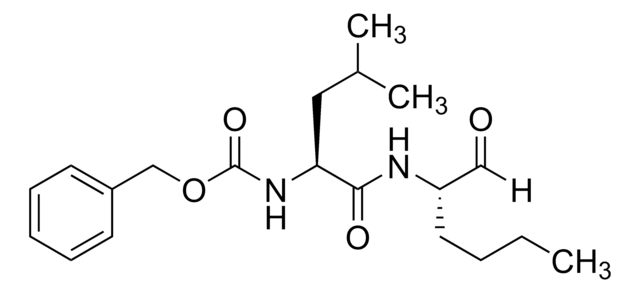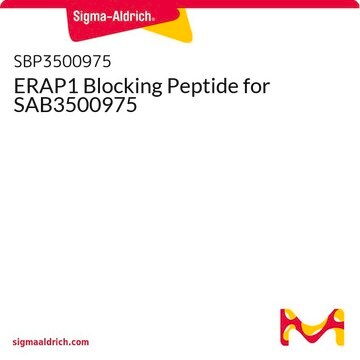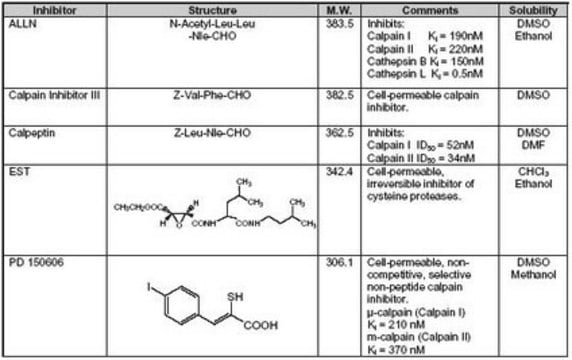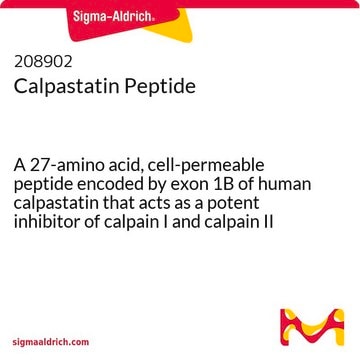11086090001
Roche
Calpain Inhibitor I
N-Acetyl-Leu-Leu-norleucinal, synthetic
Synonym(s):
Calpain Inhibitor I, n-acetyl-leu-leu-norleucinal, ALLN, Ac-LLnL-CHO, MG-101, N-Acetyl-L-leucyl-L-leucyl-L-norleucinal, N-Acetyl-Leu-Leu-Norleu-al
About This Item
Recommended Products
Quality Level
Assay
98% (chromatographically homogeneous)
form
powder
mol wt
Mr = 383.5
packaging
pkg of 25 mg
manufacturer/tradename
Roche
mp
182 °C
solubility
DMF: 10 mg/mL
ethanol: 10 mg/mL
methanol: 10 mg/mL
storage temp.
2-8°C
SMILES string
[H]C(=O)[C@H](CCCC)NC(=O)[C@H](CC(C)C)NC(=O)[C@H](CC(C)C)NC(C)=O
InChI
1S/C20H37N3O4/c1-7-8-9-16(12-24)22-19(26)18(11-14(4)5)23-20(27)17(10-13(2)3)21-15(6)25/h12-14,16-18H,7-11H2,1-6H3,(H,21,25)(H,22,26)(H,23,27)/t16-,17-,18-/m0/s1
InChI key
FMYKJLXRRQTBOR-BZSNNMDCSA-N
Looking for similar products? Visit Product Comparison Guide
Related Categories
General description
Specificity
Application
Calpain Inhibitor I is used for western blotting methods.
Quality
Formula variant
Preparation Note
The suggested starting concentration is 17 μg/ml. This is the concentration at which half maximal inhibition of calpain I is observed.
Working solution: Recommended solvent is DMF, ethanol, or methanol up to 10 mg/ml.
Storage conditions (working solution): -15 to -25 °C
Solutions in DMF, methanol, ethanol are stable for 4 weeks at -15 to -25 °C.
Reconstitution
Other Notes
Storage Class Code
11 - Combustible Solids
WGK
WGK 2
Flash Point(F)
Not applicable
Flash Point(C)
Not applicable
Certificates of Analysis (COA)
Search for Certificates of Analysis (COA) by entering the products Lot/Batch Number. Lot and Batch Numbers can be found on a product’s label following the words ‘Lot’ or ‘Batch’.
Already Own This Product?
Find documentation for the products that you have recently purchased in the Document Library.
Customers Also Viewed
Our team of scientists has experience in all areas of research including Life Science, Material Science, Chemical Synthesis, Chromatography, Analytical and many others.
Contact Technical Service














